Famous Hindu Gurus
Sister Nivedita
(Hilary and Heather)
Born Margaret Elizabeth Noble, on 28 October 1867 in Tyrone Ireland. She first met Swami Vivekananda in 1895 in London and first went to India in 1898. She was inspired by his teachings and visions. Vivekananda gave her the name Nivedita, which means “one dedicated to God”. She was the first Western woman to be accepted into an Indian order of monks. She opened a school for girls in 1898 called Ramakrishna Sarada Mission Sister Nivedita Girls’ High School. It was her vision to improve the lives of all Indian women, regardless of caste. She quickly won over the hearts of all Indian people with her selflessness and devotion to helping them.
After Vivekananda died, she became more committed to Indian independence. Even though she was not born Hindu, she felt led to help the Indian people just as Vivekananda did. During this time, she met many influential figures in the Indian independence movement, such as Sri Aurobindo and Mahatma Gandhi. She wrote many books about Indian life and culture and promoting pan-Indian nationalistic views.
She died on 13 October 1911 in Darjeeling, India. She was only forty-four years old. She is still held in the highest regard in India, and her life was celebrated nation-wide on the centenary of her birth in 1967.
Pettinger, Richard. Sister Nivedita. 01 Oct. 2006. 22 Oct. 2008 <http://www.writespirit.net/authors/sister_nivedita>.
Wikipedia. Sister Nivedita. 03 Oct. 2008. 22 Oct. 2008 http://en.wikipedia.org/wiki/Sister_Nivedita.
Rajneesh
By: Mallory Kohn, and Katie Hicks
Chandra Mohan Jain was born on December 11, 1931 in Kuchwada a small village in India. He was the eldest of eleven children, and sent to live with his maternal grandparents until he was seven when his grandfather passed away. He repeatedly changed his name to Acharya Rajneesh in the 1960s, Bhagwan Shree Rajneesh during the 1970s, and taking the name Osho in 1989. Rajneesh was an intelligent student and received his B.A. in philosophy at D.N. Jain College in 1955, and his M.A. in philosophy at the University of Sagar in 1957. He easily secured many jobs teaching philosophy to College and University students, and was promoted to a professor in 1960 at Japalpur University. As a professor of philosophy, he travelled throughout India as a public speaker, raising controversy by speaking against socilaism, Mahatma Ghandi and the belief in religon. He was a seen having a more open attitude towards sextuality, a stance that earned him the unofficial name “sex guru.” During his travels he began initiating disciples and took the role of a spirital leader. In 1981, Rajneesh moved to the United States, and his followers established a community in Oregon. The community strarted to have conflict with the local residents, mainly over land use, which created bitterness on both sides. The Oregon community collapsed in 1985, when Rajneesh revealed the community had committed a number of serious crimes, including a bioterror attack on the citizens of Dallas. Rajneesh was arrested and charged with immigration violations. He was deported back to India and stayed there until his death, January 19, 1990.
Rajneesh’s teachings emphasise the importance of meditation, awareness, love, celebration, creativity and humour – qualities that in his view are put to an end by obediance to unchanging belief systems, religious tradition and socialisation. His teachings have had a impact on Western modern day New Age thought, and their popularity has increased markedly since his death.
Osho's world . Osho's Biography.. 22 Oct. 2008 <http://www.oshoworld.com/biography/briefbio.asp>.
Wikipedia . Osho.. 22 Oct. 2008 <http://en.wikipedia.org/wiki/Osho>.
Mahatma Gandhi
Aleks Whistle & Sara Taylor

Who is Gandhi?
- His full name is Mohandas Karamchand Gandhi
- Born on October 2nd, 1869
- Died on January 30, 1948
- Influential leader in not only in India’s history but the worlds
- In 1947, Gandhi led India to independence
- Studied law
- Became a well known politician
- Member of Bombay High Court
- Conferences/ Councils
- Gandhi has been arrested thirteen times
What was his Caste?
- Gandhi was a Vaishya
- A Vaishya comes from Brahman’s thighs
- The occupations of the Vaishya caste are traders and merchants
Which path does he follow?
- Gandhi’s Guru was Raychanbhai (Path of Wisdom)
- Gandhi’s own path was Karma Marga (Path of Action)
- Through his actions, Gandhi shaped the future of his country and people.
Gandhi’s “greatness lay in doing what everyone could but doesn’t”
*Note this quote was aquired through the following source;
Life Positive. A Living Sermon.. 23 Oct. 2008
http://www.lifepositive.com/spirit/masters/mahatma-gandhi/dandi-march.asp.
He participated in:
- Protests
- Fastings
- Conferences/ Organizations
- Marches
- Everyday actions
What does Gandhi believe in?
- A firm believer in non-violence (peace)
- His method of non-violence is known as Satyagraha
- Peaceful protests
- Opposes discrimination
- Unity amongst the people
- There are as many religions as there are people in the world
- He personally believes that the Truth is God
- The Truth is what voice within you says
- Doesn’t think of God as a person, but rather an idea or a Law Himself
- Strived for Moksha
How has he affected others?
- Encourage Indians to buy local goods
- Increasing/establishing local economies
- Fought colour discrimination
- Encouraged peace
- He initiated a movement for passive resistance
- Fasted on several different occasions
- Muslim- Hindu Unity
- Raising wages for mill workers in Ahmedabad
- Harmony amongst communities
- Stood for people’s rights
- Those belonging to no caste
- Otherwise known as the untouchables
- Led Dandi March
- Followers walked with Gandhi to liberate India of the British reign
Gandhi’s Eleven Vows
Ahimsa - ( Nonviolence )
Satya - ( Truth )
Asteya - ( Non Stealing )
Brahmacharya - ( Self Discipline )
Asangraha - ( Non-possession )
Sharirshrama - ( Bread labour )
Aswada - ( Control of the palate )
Sarvatra Bhayavarjana - ( Fearlessness )
Sarva Dharma Samantva - (Equality of all religions)
Swadeshi - ( Use locally made goods )
Sparshbhavana - ( Remove untouchability )
* Note these vows are listed from the following source:
FAQs. Gandhi's Eleven Vows.. 23 Oct. 2008 http://www.mkgandhi.org/faq/faq.htm.
Famous Quotes
“Be the change you wish to see in the world”
“A nation's culture resides in the hearts and in the soul of its people.”
" Action expresses priorities."
"An eye for an eye only ends up making the whole world blind."
"I claim that human mind or human society is not divided into watertight compartments called social, political and religious. All act and react upon one another"
*Note these quotes came fromt he following site:
Brainy Quote. Mohandas Gandhi.. 23 Oct. 2008 http://www.brainyquote.com/quotes/authors/m/mohandas_gandhi.html.
Bibliography
Blog Critics Magazine. Did Gandhi Ever Win the Nobel Peace Prize Award?. 23 Oct. 2008 http://blogcritics.org/archives/2007/01/25/111957.php.
Brainy Quote. Mohandas Gandhi.. 23 Oct. 2008 http://www.brainyquote.com/quotes/authors/m/mohandas_gandhi.html.
Chronology. Biography.. 23 Oct. 2008 http://www.mkgandhi.org/chronology2.htm.
FAQs. Gandhi's Eleven Vows.. 23 Oct. 2008http://www.mkgandhi.org/faq/faq.htm.
Gandhian Institute. Mahatma Gandhi.. 23 Oct. 2008 http://www.mkgandhi.org/main.htm
Google. Vaishas.. 23 Oct. 2008 http://www.gurjari.net/ico/Mystica/html/vaishya.htm.
Life Positive. A Living Sermon.. 23 Oct. 2008 http://www.lifepositive.com/spirit/masters/mahatma-gandhi/dandi-march.asp.
Mahatma Gandhi. Gandhi's Human Touch.. 23 Oct. 2008 http://www.mkgandhi.org/humantouch.htm
Mahatma Gandhi Chronology . Early Life.. 23 Oct. 2008 http://www.mkgandhi.org/biographyicon/under1.htm.
Msn. Mohandas Gandhi Quick Facts.. 23 Oct. 2008 http://encarta.msn.com/media_461577155/mohandas_gandhi_quick_facts.html.
Meagan and Katie
Lord Basava
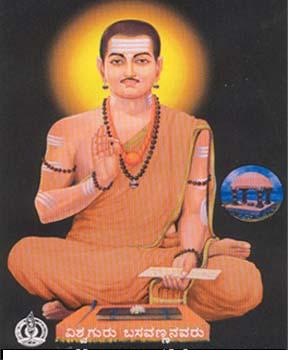
“Shree Basava (also known as Basaveshwara or Basavanna) is known as the reviver of the Veerashaiva (Lingayats) religion. He brought on a social transformation, often referred as "revolution," in that he changed the lower caste people into a higher thinking of God or Shiva.
Basava was also a part of "BhaktiPantha" of 12th century and one of the main figures with his contemporary lingayata or blessed people sect of Hinduism. He and his followers with Allama defined a new way of looking at God and life with numerous "Vachanas" (sacred hymns).”¹
Early Life
After the death of his parents soon after, he rejected Upanayana ceremony and ritualism, claiming those who performed the rituals and no "true insight". Bi sixteen years old, Basava had rid himself of the Janivara and subsequently, all brahmin traditions. ²
Religious Development¹
He spent 12 years studying Sangameshwara. There, he conversed with more conservative brahmin scholars and developed his spiritual and religious views in association with his societal understanding. His views included believing there is only one true, perfect God, Shiva, and additionally, the priests of Shiva, known as Jangamas, deserve utmost respect. He believed people who were in search of a false god need to be shown the right way. He preached the equality among the humankind and condemned all barriers of caste, creed and sex, fighting against Varnashrama, known to most as the caste system). He showed the right path to the society which was lost in the darkness of casteism, which makes him a unique saint, hence he was known as Jagathjyothi, which means "a divine light for the world." He is also known as Krantikari Basavanna for his revolution in the caste ridden society.
After marrying the daughter of his maternal uncle and also acquiring a second wife, Basava became a minister in King Bijjala'scourt at Mangalaveda. There, he estabilished the Anubhava Mantapa, a spiritual parliament to openly discuss Veerashaivism, which attracted many saints from throughout India. He believed in the principle 'Work is Worship'. It was at this time that the Vachanas, simple and easy-to-understand poetrywritings which contained essential teachings, were written.
Basava created much controversy by actively ignoring the societal rules associated with the caste system, which he wished to abolish. By allowing untouchables to have lunch at his residence and praising the historic marriage of a Brahmin woman and an Untouchable man, orthodox members of King Bijjala's court went to the King with such stories, some true and some false. Bijjala, afraid of a possible uprising in orthodox society, ordered the newly married couple to harsh punishment, removing their eyes and dragging them through the streets tied to elephants. Basava was deeply disturbed by this turn of events and blamed himself for the couple's demise. He left Kalyana in1167 A.D. for Kudala Sangama and attained unionship with Lord Kudala Sangameshwara the same year.
Summary³
- Prophet founde
|
Lord Basavanna (1134-1196)
|
- Religious scriptures
|
Vachana Literature
|
- Language of the religion
|
Kannada
|
- Name of God, the Creator
|
Lingadeva
|
- Religious symbol
|
A globular shaped emblem called Istalinga that is worn on body
|
- Holy religious place
|
Kudala Sangama in Bagalakot district of Karnataka, where founder-prophet Basavanna erged with God (Lingaikya)
|
- Religious annual congregation
|
Sharana Mela -the annual mammoth congregation
|
|
(Just like Huz of Muslims) at Kudala Sangama. (January 11, 12, 13, 14 & 15)
|
- Religious custom
|
Sharana Vrata
|
- Religious consecration
|
Istalinga Diksha
|
- Religious centre
|
Basava (Anubhava) Mantapa
|
- Rites and rituals
|
Worship of Guru-Basavanna, Istalinga-globular Emblem, Jangama- holy person.
|
- Religious weekly congregation
|
Sharana Sangama-weekly prayer
|
- Holy month
|
Shravana
|
- Flag symbol
|
Hexagonal star with Istalinga on Saffron coloured cloth.
|
- Heritage
|
Sharana heritage started from Lord Basavanna with so many Sharanas and Shivayogis of Lingayat Religion.
|
- Religious fraternity
|
Equality without any distinction of caste, creed, class or sex.
|
- Aim of Lingayat religion
|
To build up a welfare state free from caste, creed, class and based on religious values.
|
Bibliography
¹"Lord Basava." Indopedia. 07 DEC 2004. The Indology CMS. 23 Oct 2008 http://www.indopedia.org/Lord_Basava.html.
²"Lord Basava." Creedopedia. 2006. 23 Oct 2008 <http://www.creedopedia.com/topics/Lord-Basava>.
³"Basavanna." chennamallikarjun. 11 NOV 2001. Tripod. 23 Oct 2008 <http://chennamallikarjun.tripod.com/>.
[Note: It is not in alphabetical order because of FICKLE technical difficulties with horrid Wiki, so it is numbered in correspondence in where the information is found]
Bhaktivedanta Swami Prabhupada
Sam Rekker and Natalie Chartrand
Bhaktivedanta Swami Prabhupada was born in 1896, in Calcutta. He was born into a Vaisnava (a fairly monotheistic interpretation of Hinduism, however non-exclusive. Usually practice Bhakti yoga) family. In 1922 he decided with his spiritual teacher that he would devote his life to the teachings of the vedas. He decided this after he was given instruction by his spiritual teacher and two weeks later, he died. So B.S.P wanted to fullfill these instructions as a last duty to his spiritual teacher, and to follow his dharma.
He became a Hindu teacher of the International Society for Krishna Conciousness, or more commonly known as the Hare Kirshna Movement. He was a motivational and inspirational speaker on behalf of the Hindu religion and influenced along with gained respect of many followers accross more than one continent. He was responsible for passing on "Krishna" awareness to the "english speakers" or the West. In 1944 he started a magazine, (when there wasn't a wide supply of paper because of the war) so that he could continue to preach Krishna Consiouness even through rough global times. That magazine is still published today and began a very literary career for B.S.P. He wrote several books from scratch, binding them himself and selling them himself. He even preached when he'd just been hit by two heartattacks and while he was practically penniless. He wrote sometimes more than fifteen hours a day, and his books have now been published in over 50 languages and are availible to people all over the world. During his short time in the west he preached to thousands of people, initiated the construction of 108 temples, and gained 5000 disciples. His dedication to his religion and to his dharma was more than impressive, and he was extremely successful in promoting Krishna awareness to the world, bringing a very modern approach to accepting and understanding other cultures.
Swami passed away November 14th 1977, but his life and his short time in the west left a giant imprint on humanity. His writings are still availible today, and are the basis of learning for his disciples and grand disciples and to create awareness and understanding with people all over the world.
This is a Famous Letter that was written to one of Swami's spiritual daughters. A perfect example of the time and care put into his teaching and encouragements :
"Now you have got a good wife who is also intelligent girl and devotee, so live peacefully working together for pushing on this Krsna consciousness movement for the ultimate benefit of all concerned.
(Letter to Krsnakanti. Los Angeles, 1 August 1970)"

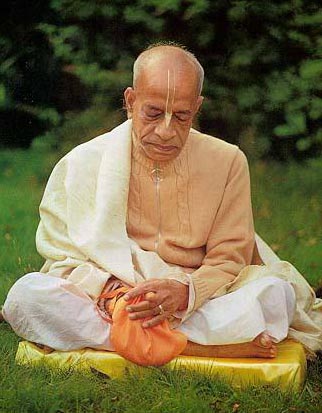
Bibliography
ISKON. A. C. Bhaktivedanta Swami Prabhupada. 2002. 25 Oct. 2008 http://www.iskcon.com/about/parampara/srila_prabupada.html.
Prabhupada Hare Krishna News Network. A Brief Biography. 2008. 24 Oct. 2008 http://prabhupada.krishna.org/.
Unknown. Defending Srila Prabhupada's Integrity. unknown. 24 Oct. 2008 http://bvml.org/ACBSP/dspl.html.
Wikimedia Foundation Inc. A. C. Bhaktivedanta Swami Prabhupada. 20 Oct. 2008. 24 Oct. 2008 http://en.wikipedia.org/wiki/A._C._Bhaktivedanta_Swami_Prabhupada.
Dhondo Keshav Karve --Shayan Methot, Darius Firoz
April 18, 1858 - November 9, 1962

"Maharshi Karve lived for a hundred and four years. After he completed his education he pledged his life to the service to others. He chose poverty and walked the path strewn with criticism and opposition; he wiped others, tears, he brought education, equality, honor and joy into the lives of many people."
" He promoted education of women and freedom for widows to remarry if they wished to do so. The Government of India recognized his reform work by awarding him its highest civilian award, Bhārat Ratna in 1958, (the year in which, incidentally, he completed his 100 years of life. He lived for four more years.)
He was born in a lower middle-class Chitpāvan Brahmin family. His father's name was Keshav Bāpunnā Karve. Karve's parents arranged his marriage when he was 14 to an 8 year old girl named Rādhābāi. Karve had four sons: Raghunāth (from his first marriage), Shankar, Dinkar , and Bhāskar. "
He demonstrated his true compassion towards and sensitive realization of the utter misery of the underprivileged Indian widowhood, by upholding the reform of widow-remarriage. He had provided young widows with jobs. Karve was suggested to allow unmarried girls to avail of education in his school. Because schools for girls were scarce, Karve was asked to admit unmarried girls as well.
He was born at Sheravali, Khed Taluk in present Maharashtra state of India, in the Ratnirigi district. He was born into the Chitpavan Brahmin family. He married his first wife at the age of 14 while she was 8, and in his later days he looked at this as impoper as it is. They only began marital life when she was 14 and he was 20, and she late died in 1891, this widow's deplorable state grieved him so. As tragic as her death was, it later set his mind onto the puruit of bettering the living conditions of the Indian wife for at this time they had little to no privilege and wree treated poorly. He was later segregated and tormented by the orthodox Hindus in his town, as he began the remarriage of a widow and himself. As he married Godubai, the 22 year old sister of his college friend, the people around him began to treat him with disrespect and tormented his mother. Later this led him to educate widows and women so that they could be economically self-sufficient. He got a feel for what widows were treated like as he himself was segregated.
Awards and honors
From 1891 to 1914, he taught Mathematics at Fergusson College in Pune. He had also started a women's shelter and a school for widows and other women in 1896.First widow to join him was his sister in law, Parvtibai Athavale. She got educated with his help and joined him as first lady superintendent of the institution, which was called as Hindu Widows' Home Association and later renamed to Hingane Stree Shikshan Samstha. It is now called as Maharshi Karve Stree Shikshan Samstha
He died in Pune on November 9, 1962.
Bibliography
Amedia Luz. Maharishi Dhondo Keshav Karve. 2008. http://www.amedialuz.ca/india/karve/karve.html.
Hinu Net Inc. The Hindu Net. 1994-2003. http://www.freeindia.org/biographies/greatpersonalities/karve/index.htm.
India Net Zone Inc. The India Net. 2006. http://www.indianetzone.com/7/dhondo_keshav_karve.htm.
Wikipedia foundation Inc. Wikipedia. Oct. 28, 2008. http://en.wikipedia.org/wiki/Dhondo_Keshav_Karve.
Sai Baba
Rona Ghanbari and Daniel Van Sickle

Sai Baba of Shirdi, also known as Shirdi Sai Baba, was an Indian guru, who was a believer of both Hindu and Muslim faiths and was regarded by all his followers as a Saint. Some of his devotees believe that he was an incarnation of Shiva(Hindu God) and an incarnation of Kabir(Muslim God). He was also regarded as a satguru(true guru).
The name 'Sai Baba' is a combination of Persian and Indian origin and its direct translation into English is “holy father” or “saintly father.” He was very secretive about his personal life as a child so his origins are contemplative, however it has been said that he was born in Shirdi by parents of the Brahmin caste,(educators, teachers, etc.), the highest positions of the four Varnas.
He led an ascetic life from a very young age, and continued on to become a Guru. His teachings were all oral, as he has no written works. In his teachings, he tried to reconcile Hinduism and Islam, and taught using words and figures from both religions and traditions. He taught a moral code of love, forgiveness, helping others, charity, contentment, inner peace, and devotion to God and guru.
His path to transcendence was not only through the ascetic life but also through three of the main spiritual paths, Bahkti Yoga, Jnana Yoga and Karma Yoga. Sai Baba emphasized the importance of devotion to God and also talked about the need of faith and devotion to one's spiritual preceptor (guru). He said that everyone was the soul and not the body. He advised his disciples and followers to overcome the negative features of character and develop the good ones.
One reason, other than his many teachings, that Sai Baba was regarded as a Saint was because of the many miracles he was said to have performed.
"Sai Baba's millions of disciples, followers and devotees believe that he had performed many miracles. Some of them were: bilocation, exorcisms, curing the incurably sick, helping his devotees in need in a miraculous way, reading the minds of others. Numerous inhabitants of Shirdi talked about these miracles. Some of them even wrote about them in books. They talked and wrote about how they (and others) were the witnesses of his unusual Yogic powers: levitation, entering a state of Samādhi at wish, even removing his limbs and sticking them back to his body (Khanda Yoga) or doing the same with his intestines.
According to his followers he appeared to them after his death, in dreams, visions and even in bodily form, whence he often gave them advice. His devotees have many stories and experiences to tell. Many books have been written on the same."(wikipedia)
Some Of Sai Babas Famous quotes:
"Unless there is some relationship or connection, nobody goes anywhere. If any men or creatures come to you, do not discourteously drive them away, but receive them well and treat them with due respect. Shri Hari(God) will be certainly pleased if you give water to the thirsty, bread to the hungry, clothes to the naked and your verandah to strangers for sitting and resting. If anybody wants any money from you and you are not inclined to give, do not give, but do not bark at him like a dog."
"Why do you fear when I am here"
"He has no beginning... He has no end."
Sai Baba also made eleven assurances to his devotees:
-
Whosoever puts their feet on Shirdi soil, their sufferings will come to an end.
-
The wretched and miserable will rise to joy and happiness as soon as they climb the steps of My Samahdi.
-
I shall be ever active and vigorous even after leaving this earthly body.
-
My tomb shall bless and speak to the needs of my devotees.
-
I shall be active and vigorous even from my tomb.
-
My mortal remains will speak from My tomb.
-
I am ever living to help and guide all who come to Me, who surrender to Me and who seek refuge in Me.
-
If you look at Me, I look at you.
-
If you cast your burden on Me, I shall surely bear it.
-
If you seek My advice and help, it shall be given to you at once.
-
There shall be no want in the house of My devotee.

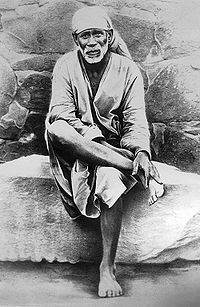
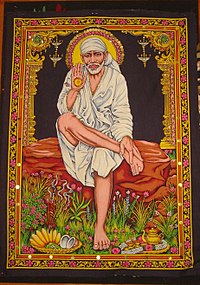
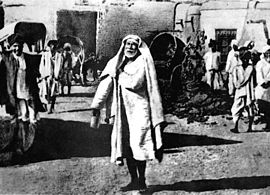
Citations:
Wikipedia foundation Inc. Wikipedia. 26 Oct. 2008. 28 Oct. 2008 http://en.wikipedia.org/wiki/Sai_Baba_of_Shirdi.
Towards Light. Shri Sai Baba of Shirdi The Perfect Master of the Age. 31 Oct. 2002. 28 Oct. 2008 http://www.saibabaofshirdi.net/.
Shri Saibaba Sansthan Trust . Shri Saibaba.. 28 Oct. 2008 http://www.shrisaibabasansthan.org/.
SriSai. ShidriBaba. 13 02. 1999. 28 Oct. 2008 http://www.shirdibaba.org/.
saibaba.org . Shirdi Sai Baba. 23 Oct. 2008. 28 Oct. 2008 http://www.saibaba.org/.
DzinerStudio. Sai Forum.. 28 Oct. 2008 http://www.shirdi-sai-baba.com/.
Dr. Ananda K. Coomaraswamy
(August 22, 1877 - September 19, 1947)
Jennifer Carmelo and Erika Lewis

His Life
The son of a famous Tamil legislator and prominent English woman from Kent (hence the middle name "Kentish"), Dr. Ananda K. Coomeraswamy was born with the opportunity to embrace his father's Hindu tradition by emphasizing it in Western circles. His father's early death accentuated this opportunity when he moved to England with his mother, where most of his early education was established. Coomaraswamy moved to England with his mother in 1879 and attended Wycliff prepatory school at the age of twelve. He later on attended University College, London where he pursued studies in botany and geology. After he had received his degree, he married English photographer Ethel Mary Partridge and moved to Ceylon (Ceylon is the former name of Sri Lanka). He was awarded a doctorate for his fieldwork and initiated the Geological Survey of Ceylon. However, his main interest, whom he also shared with his wife, was the native arts and customs of Ceylon and surrounding India. As he became more involved in their preservations, anti-British sentiments towards colonialism and westernization began to arise. With these sentiments, his predictable career in geology curved into a focus on art and its history, specifically that of India and Ceylon. This introduced the Ceylon Social Reform Society and the start of Coomarawammy's career as a art historian, social critique, and philosopher.
Coomaraswamy's marriage with Ethel Partridge failed, but he had several wives afterwards and children. His second wife was an Englishwoman who sang Indian songs under the stage name “Ratan Devi”--they moved to Boston together in 1917, where he became the the first Keeper of Indian art in the Museum of Fine Arts. He had two children with her, Narada and Rohini; Narada was killed in a plain crash, and Ratan, who was already sickly, died shortly afterwards. His third wife was the American artist Stella Boch, they divorced in 1930 but continued to be friends. His fourth wife was Argentinian photographer Doña Luisa Runstein. They had a son together Rama Poonambalam Coomaraswamy, who, like his father and grandfather, had a very interesting and prolific life.
He died in Needham, Massachusettes on September 19, 1947. This is where he resided and worked as an art curator in the Museum of Fine Arts. He achieved a legacy in Indian arts by developing and gathering more information to the West--his wife continued this legacy and contributed as a guide and resource.
His Contributions
As an art historian, Dr. Ananda's scholarly nature and eloquence helped him gain connections and appreciation in India, Sri Lanka, the United States, and England. He revolutionized much of art history with his keen knowledge in languages and his liberal interpretations. Art was not just studied for its aesthetic or antiquarian qualities, but also for its philosophical, religious, or social meanings.
His philosophical interpretations of ancient Asian art led him to spiritual contemplation. He wrote Philosophia Perrenis, a holistic commentary on philosophy and the "cycle of truths". This commentary had a wide range of philosophical and religious ideals that encompassed both western and eatern belief systems.
He considered himself a professional sage, but would not refer to himself as a Guru.
His Works
- Figures of Speech or Figures of Thought?: The Traditional View of Art, (World Wisdom, 2007) ISBN 978-1933316345
- Hinduism And Buddhism, (Kessinger Publishing, 2007) ISBN 978-0548124420
- Introduction To Indian Art, (Kessinger Publishing, 2007) ISBN 978-1432577636
- The Dance Of Siva, (Kessinger Publishing, 2006) ISBN 978-1428680302
- Buddha and the Gospel of Buddhism, (Obscure Press, 2006) ISBN 978-1846647390
- Indian Music, (Kessinger Publishing, 2006) ISBN 978-1428680319
- Buddhist Art, (Kessinger Publishing, 2005) ISBN 978-1425464066
- Guardians of the Sundoor: Late Iconographic Essays, (Fons Vitae, 2004) ISBN 978-1887752596
- History of Indian and Indonesian Art, (Kessinger Publishing, 2003) ISBN 978-0766158016
- The Essential Ananda K. Coomaraswamy, (World Wisdom, 2003) ISBN 978-0941532464
- Dance of Siva Fourteen Indian Essays, (Kessinger Publishing, 2003) ISBN 978-0766129252
- Myths of the Hindus and Buddhists, (Kessinger Publishing, 2003) ISBN 978-0766145153
- Rajput Painting, (B.R. Publishing Corp., 2003) ISBN 978-8176463768
- Early Indian Architecture: Cities and City-Gates, (South Asia Books, 2002) ISBN 978-8121505185
- The Living Thoughts of Gotama the Buddha, (Fons Vitae, 2001) ISBN 978-1887752381
- The Origin of the Buddha Image, (Munshirm Manoharlal Pub Pvt Ltd, 2001) ISBN 978-8121502221
- Perception of the Vedas, (Manohar Publishers and Distributors, 2000) ISBN 978-8173042546
- The Door in the Sky, (Princeton University Press, 1997) ISBN 978-0691017471
- Mirror of Gesture, (South Asia Books, 1997) ISBN 978-8121500210
- The Transformation of Nature in Art, (Sterling Pub Private Ltd, 1996) ISBN 978-8120716438
- Spiritual Authority and Temporal Power in the Indian Theory of Government, (Oxford University Press, 1994) ISBN 978-0195631432
- A New Approach to the Vedas: An Essay in Translation and Exegesis, (South Asia Books, 1994) ISBN 978-8121506304
- What is Civilisation?: and Other Essays. (Oxford University Press, 1991) ISBN 978-0195623734
- Yaksas, (Munshirm Manoharlal Pub Pvt Ltd, 1998) ISBN 978-8121502306
- Metaphysics, (Princeton University Press, 1987) ISBN 978-0691018737
- Coomaraswamy: Selected Papers, Traditional Art and Symbolism, (Princeton University Press, 1986) ISBN 978-0691018690
- Bugbear of Literacy, (Sophia Perennis, 1979) ISBN 978-0900588198
- Bronzes from Ceylon, chiefly in the Colombo Museum, (Dept. of Govt. Print, 1978)
- Early Indian Architecture: Palaces, (Munshiram Manoharlal, 1975)
- The arts & crafts of India & Ceylon, (Farrar, Straus, 1964)
- Christian and Oriental Philosophy of Art, (Dover Publications, 1956) ISBN 9780486203782
- Time and eternity, (Artibus Asiae, 1947)
- Am I My Brothers Keeper, (Ayer Co, 1947) ISBN 978-0836903355
- Archaic Indian Terracottas, (Klinkhardt & Biermann, 1928)
Citations
Anonymous. Ananda K. Coomaraswamy: Life and Work. 08 Nov. 2007. 28. Oct. 2008. http://www.worldwisdom.com/public/authors/details.aspx?ID=37
Shanmugalingam, R.. One Hundred Tamils - Ananda K Coomaraswamy. 02 Oct. 2008. 27 Oct. 2008 http://www.tamilnation.org/hundredtamils/coomaraswamy.htm.
Wikipedia. Ananda Coomaraswamy. 22 Oct. 2008. 27 Oct. 2008 http://en.wikipedia.org/wiki/Ananda_Coomaraswamy.
Maharishi Mahesh Yogi
(January 2, 1917 - February 5, 2008)
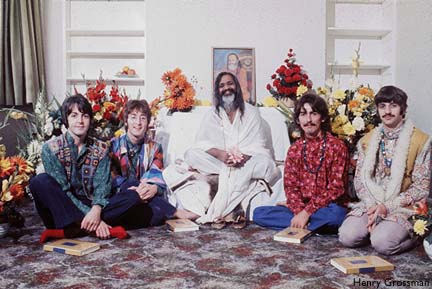
Maharishi (the Great Sage) Mahesh Yogi was the first guru to introduce the transcedental meditation program and yogic flying (bouncing in the air in the lotus position) to the Western world. Maharishi Mahesh was also the guru to the popular music band the Beatles (see photograph above), as well as many other famous, A-list celebrities.
Maharishi began studing meditation after completeing a degree in physics in 1942, and in 1959 he started teaching his meditation techniques to the world. But Maharishi's fame didn't last, eventually he fell out with most celebrities, after rumours of inappropriate advances towards Mia Farrow, inspiring John Lennon's hit song Sexy Sadie. Though by the late 1970's, Maharishi Mahesh had more than five million practisioners of transcedental meditation, where practisoners spend up to 20 minutes meditating over a single word, a mantra, which helps them reduce their stress and improve their concentration.
It is also said that Maharishi had successfully completely restored the Vedic Literature, or the Vedas, for it's total significance & had organized it into a form of science of consciousness. He had a number of other accomplishments in his life as well, a few including creating the Science of Creative Intellegence, discovering the Constitution of the Universe, inaugurating the "Ideal Society" campaign in 108 countries, etc. and also convinced militaries to start a trascedental meditation (Yogic Flying) wings to harness their internal spiritual powers to create invisible shields of invincibility (that's right, military officers in many countries have yogic flying divisions).
Yogic Flying Video
http://www.youtube.com/watch?v=NHwhGUo90jw
Comments (0)
You don't have permission to comment on this page.